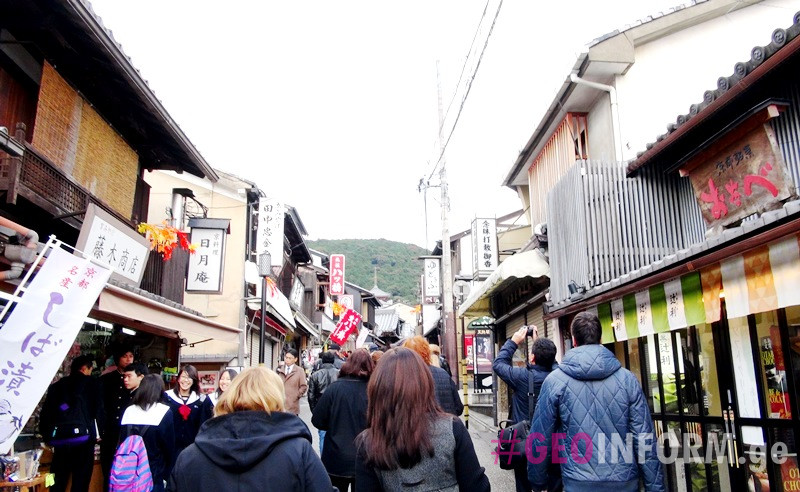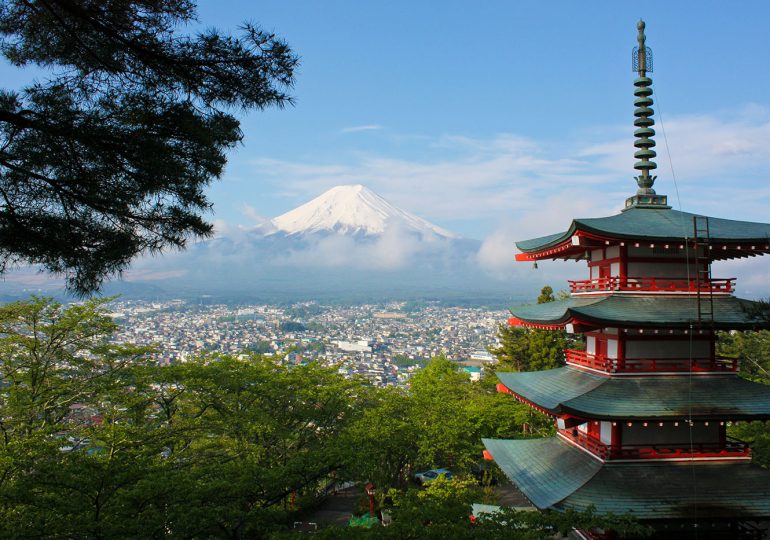A year after travel restrictions were lifted, authorities are grappling with the influx of millions of visitors, especially tourists in Japan who do not respect the environment and local customs. Return of tourists to Japan brings Instagrammers and trash.
At the height of the Covid pandemic, restaurateurs and owners of Tokyo's Tsukiji Market were probably dreaming of days like this when tourists would return to Japan.

Columns of tourists with smartphones wander the narrow streets, stopping to inspect hand-forged kitchen knives and tsukemono pickles and sip free samples of green tea. Restaurants tempt lunchtime tourists in Japan with grilled wagyu sticks, poached crab legs and, for dessert, plump strawberries in chewy mochi rice.
Tourists in Japan's Tsukiji city don't always behave well
However, there are signs that Japan's multinational tourists in the city of Tsukiji are not always well behaved. Signs in English urge them not to eat outside the storefronts or leave trash. Staff remind diners where to queue for the 2,700 yen (£14.40) 12-course sushi lunch. Here, as in many other popular destinations around the world, the boom in tourism is a double-edged sword.
Almost a year after tourism restrictions were lifted in Japan
Nearly a year after Japan's pandemic tourism restrictions were lifted, foreign visitors have returned with a vengeance, drawn by a weak yen, the world's best cuisine and the promise of a vacation of a lifetime in a country once considered a tourist backwater.
Read also: How prices have changed in Georgia in 2023
“Everything is cheap, the service is incredible, and the food is the best you'll get for a fraction of the price you'd pay in America”, said Tommy Buheit, an American visiting Japan for the first time.
These and other attractions attracted 25.8 million foreign visitors to Japan last year, six times more than in 2022, according to immigration authorities. Together they spent a record ¥5.3 trillion (£28.3 billion), according to the Japan Tourism Agency. Japan's government wants more, setting an ambitious target of 60 million visitors - and spending of 15 trillion yen - by the end of the decade.
But critics say infrastructure is ill-prepared to handle increased tourism in Japan, citing even greater pressure on housing, public transport and services as the country grapples with severe labor shortages and an aging population.

Tourism in Georgia can learn valuable lessons from Japan's experience
Tourism in Georgia can learn valuable lessons from the Japanese experience and apply them in the context of tourism development and visitor management.
First, Georgia should develop a sustainable tourism strategy that takes into account the interests of the local population, the preservation of cultural heritage and the environmental sustainability of tourist destinations. Just as Japan strives for a balance between welcoming tourists and preserving the quality of life of local residents, Georgia must create mechanisms to control and regulate tourist flows.
Secondly, Georgia should invest in the development of less popular tourist destinations to relieve congestion in centers and distribute flows throughout the country. Just as Japan allocated 11 “typical” destinations, Georgia can focus on the country's diverse regions, offering tourists unique and varied experiences.
Read also: 7 million tourists visited Georgia in 2023
Thirdly, it is important for Georgia to focus on educating tourists and the population about the importance of respecting local customs, culture and the environment. Just as Japan began charging fees to visit some cultural and natural attractions, Georgia could introduce measures to encourage responsible tourist behavior and help preserve the country's unique cultural and natural resources.
Tourists in Japan without negative impact on the quality of life of the local population
In my vision of a new “tourist nation” Prime Minister Fumio Kishida said sustainable tourism depends on welcoming tourists to Japan without negatively impacting the quality of life of the local population. Proposals outlined by the government last year include increasing the number of buses and taxis, increasing public transport fares at peak times and opening new bus routes.
tourists in Japan highlight 11 “typical” destinations including rural eastern Hokkaido and the subtropical island of Okinawa. Local officials hope it will draw away visitors from Tokyo, Osaka and Kyoto, which together accounted for 64% of foreign overnight stays in the region in the first eight months of last year. The emphasis will be less on consumption and more on cultural immersion, from mountain asceticism and Zen meditation to pottery and sake making.
“Tourism pollution” most prominently in Japan in Kyoto
“Tourism pollution in Japan” most prominently in Kyoto, the ancient capital of Japan, home to some of the country's most famous temples and shrines, and in the Gion geisha district. In 2022, the number of tourists visiting Kyoto exceeded 43 million - about 30 times the city's population.
Peter McIntosh, a longtime Canadian resident who runs geisha-themed walking tours, said residents were struggling to reconcile the chaos caused by crowds of visitors with soaring costs.

Problems and prospects of tourism in Japan
“The problem is that people here want the best of both worlds - to have a quieter life and make money - but as more people arrive the situation will only get worse. Kyoto becomes open to everyone”, McIntosh shared, noting that tour groups of up to 40 people are not unusual.
The boom has seen lesser-known destinations struggle with travelers seeking to scrape together social media content. These include a railway crossing in Kamakura, southwest of Tokyo, which is swarming with fans Slam Dunk, a popular manga comic and anime series about high school basketball. The crossroads that appears in the opening credits of the anime is considered by fans to be “sacred place”.
Overtourism in Japan is damaging
Some local authorities are taking matters into their own hands, fearing that overtourism in Japan is damaging sites of historical and environmental importance.
Visitors to Itsukushima Shrine, a UNESCO world heritage site, must pay 100 yen (53 cents) for admission, and later this year tourists heading to the Taketomi Islands will be charged an as-yet-undetermined amount to help protect their pristine beaches.
Read also: Rental prices in Georgia fell by almost 30% 2024
From this summer, visitors planning to climb to the top of Mount Fuji, another UNESCO site, will be charged 2,000 yen (£10.70) as local authorities try to ease congestion on the crowded trails, which were walked by more than 5 million people in 2019 Human.
Japan has become a tourism destination
“Japan has become a tourism destination”, said Carlene de Bruin, who came to Tokyo from the Netherlands with her father and brother. “I can imagine that the locals are fed up with this and we are trying to mind our own business. But you can feel the vibe of social media...people dress and take pictures a certain way because it makes for good content”.
Kenichi Kondo, a Tsukiji fishmonger, beamed as he served grilled black cod fillets to hungry passers-by. “Our income has increased tenfold since tourists returned to Japan, compared to a couple of years ago.”, noted Kondo, whose business has occupied the same location for more than 50 years. “At first we had a lot of people from North America and Europe, but now they are mostly from Southeast Asia and we are expecting a lot of visitors from China when they celebrate their New Year soon”.
While he welcomed the support tourism has given his store's 10 employees, Kondo admitted that litter has become a big problem. “We try to get around this problem by asking people to take out their trash if they buy our fish. There are exceptions, but tourists here are generally well behaved”.
Japan isn't just for your Instagram story.
Lizzie Jones, an American on her fourth trip to Japan, was optimistic about the crowd she encountered in Tsukiji on an unseasonably warm February day. “You expect this when you do tourist things... when you come to this market you know it will be crowded”.
But like many locals, she objected to the scavengers and busybodies who flout local customs and treat busy areas like their own personal photo studio.
Read also: An unknown painting by Niko Pirosmani was found
“I think it's a generational issue.”, she shared. “The first few times I came here there was no trash, but now there is a lot of it. There is also a sense of entitlement...tourists in Japan do whatever they want and don't learn the local customs. They do not care. Japan isn't just for your Instagram story.”.







